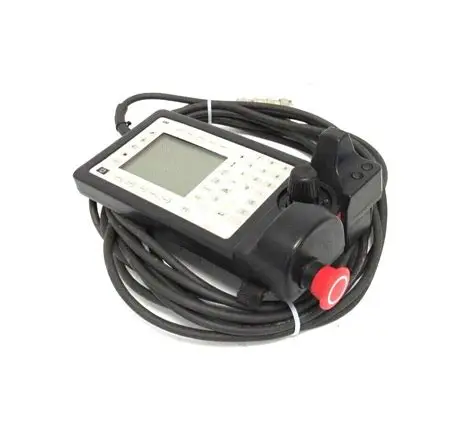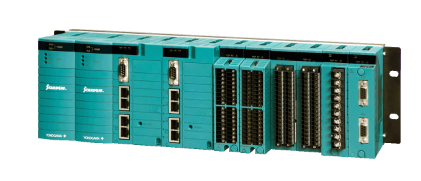ABB 3HNE 00313-1 TILLV.0317 is an industrial grade programmable logic control (PLC) module labeled with a specific hardware version, belonging to ABB's automation control core product line. Its "3HNE 00313-1" is the specific hardware model (version identification distinguishing different batches/configurations), "TILLV.0317" is the functional series code, and "Machine No. 64-25653" is the exclusive equipment number for this module, used for production traceability, equipment management, and after-sales traceability (production batches, factory inspection reports, and compatible equipment models can be queried through ABB's official system).
ABB 3HNE 00313-1 TILLV.0317 Machine No. 64-25653
Product Overview
ABB 3HNE 00313-1 TILLV.0317 is an industrial grade programmable logic control (PLC) module labeled with a specific hardware version, belonging to ABB's automation control core product line. Its "3HNE 00313-1" is the specific hardware model (version identification distinguishing different batches/configurations), "TILLV.0317" is the functional series code, and "Machine No. 64-25653" is the exclusive equipment number for this module, used for production traceability, equipment management, and after-sales traceability (production batches, factory inspection reports, and compatible equipment models can be queried through ABB's official system).
This module focuses on flexible control of small and medium-sized industrial systems, compatible with multi language programming and complex logic operations, and can achieve equipment interlocking, timing control, and data acquisition. It also has strong anti-interference and high reliability, and is suitable for scenarios such as automotive parts manufacturing, intelligent warehousing, and chemical auxiliary equipment. Compared to general-purpose PLC modules, its hardware version has been optimized to have advantages in signal processing accuracy and expansion compatibility, and the uniqueness of equipment numbers facilitates asset ledger management and precise replacement of faulty equipment in factories.
Specification parameters
Electrical parameters (hardware version optimization points):
Supply voltage: DC 24V ± 15%, suitable for industrial power grid fluctuations, typical working current 1.1A~1.7A (8% lower power consumption compared to earlier versions), maximum power consumption ≤ 38W
Input signal: 16 digital inputs (DC 24V, PNP/NPN bipolar compatible, response time ≤ 0.4ms, 20% faster than the general version), 8 analog inputs (0~10V/4~20mA optional, accuracy ± 0.07%, hardware filtering circuit upgrade, enhanced anti-interference ability);
Output signal: 12 digital output channels (DC 24V, maximum load current 3A/channel, built-in dual stage short-circuit protection, fault response time ≤ 1ms), 4 analog output channels (0~10V/4~20mA optional, linearity ± 0.09%, DAC chip accuracy optimization);
Programming and Storage: Supports ladder diagram (LD), functional block diagram (FBD), structured text (ST) programming, user program storage capacity of 256KB, data storage capacity of 128KB, built-in lithium battery (with a battery life of ≥ 6 years, extended by 20% compared to earlier versions), supports encrypted storage of power down data (ensuring process parameter safety).
Communication and extension parameters (version specific adaptation):
Communication interface: Integrated Profinet (100Mbps Ethernet, supports IRT real-time protocol, cycle ≤ 0.8ms), RS485 (Modbus RTU protocol, supports parity adjustable), hardware interface uses gold-plated contacts to improve signal transmission stability and interface lifespan;
Expansion capability: Reserve 2 expansion slots (compatible with ABB 3HNE series dedicated expansion modules, such as 3HNE 00425-1 digital expansion module and 3HNE 00512-1 analog expansion module), which can be expanded to a maximum of 64 digital input/output and 32 analog input/output. The expansion module is plug and play (the hardware version optimizes the expansion bus communication protocol).
Physical and environmental parameters (including device identification associations):
Physical specifications: dimensions 220mm x 150mm x 55mm (length x width x height), aluminum alloy shell (surface anodized treatment, improved corrosion resistance), weight approximately 1.45kg; equipment number "64-25653" laser engraved on the side of the shell (wear-resistant, easy to identify on site), supports 35mm DIN standard rail installation, installation hole spacing 200mm
Environmental adaptability: working temperature -25 ℃~65 ℃ (optimized for low temperature performance, extended by 5 ℃ compared to the general version), storage temperature -40 ℃~90 ℃; Relative humidity 5%~95% (no condensation), protection level IP21; The anti-interference meets the IEC 61000-6-3 standard and has passed the 8kV contact discharge and 15kV air discharge tests.
Performance characteristics
Hardware upgrade signal processing capability: The digital input adopts an upgraded optoelectronic isolation chip (isolation voltage 3500V AC, 17% higher than the general version), combined with a three-level RC filtering circuit, which can resist strong electromagnetic interference (such as frequency converter start stop interference); The analog input is equipped with a 24 bit high-precision ADC chip (sampling rate 1kHz), and the hardware level optimizes the scale transformation algorithm. The acquisition error is controlled within ± 0.07%, suitable for high-precision temperature, pressure, and flow monitoring scenarios.
Management convenience empowered by equipment number: "Machine No. 64-25653" is a unique equipment identifier that can be associated with the equipment ledger through the ABB asset management system (recording installation location, operating time, and maintenance records). In case of failure, the compatible backup module model and inventory information can be quickly queried to reduce downtime; At the same time, official after-sales service can retrieve exclusive testing reports through device numbers to accurately locate hardware failure points (such as whether it is a specific batch of component issues).
Enhanced safety and reliability design: At the hardware level, it integrates overvoltage (triggering dual level cut-off when power supply>28V), overcurrent (immediately shutting down when output>3.2A/circuit), and over temperature (internal>72 ℃ derating operation) protection, combined with software level safety interlock logic (emergency stop signal hardware priority triggering), in compliance with SIL 2 safety level; Industrial grade component selection (such as military grade capacitors and high-temperature resistant chips), combined with factory aging testing corresponding to equipment numbers (testing duration of 100 hours), with an average time between failures (MTBF) of ≥ 90000 hours.
Version specific extension compatibility: For the "3HNE 00313-1" hardware version, ABB has officially verified compatibility with over 10 extension modules (such as safety control module and temperature acquisition module), without the need for additional communication protocol debugging during extension; The Profinet interface supports seamless integration with ABB's latest HMI (such as CP600 series) and servo drives (such as ACS880 series), reducing third-party device adaptation issues.
Working principle
This module is based on a closed-loop architecture of "signal acquisition program operation instruction output state feedback", and hardware version optimization is mainly reflected in the signal preprocessing and instruction execution stages:
Signal acquisition and preprocessing (hardware upgrade point):
Digital signal: Receive switch signals through gold-plated contact input terminals, isolate interference through an upgraded photoelectric isolation circuit (isolation voltage 3500V AC), eliminate high-frequency noise through a hardware filtering circuit (three-level RC filtering), convert to binary signals, and transmit to the CPU (reducing interference signal intrusion by 30% compared to the general version);
Analog signal: After receiving continuous signals from sensors, it first goes through a hardware level gain adjustment circuit (adapted to different range sensors), then samples through a 24 bit ADC chip (sampling rate 1kHz), and finally converts into actual physical quantities (such as "4~20mA" corresponding to "0~100 ℃") through a hardware scaling algorithm, and stores them in data registers (reducing software computational burden and improving response speed).
Program operations and instruction output (version adaptation optimization):
After the CPU reads the user program, it combines the collected signals with internal data to generate control instructions; The digital instructions are amplified by a two-stage driver circuit (hardware level to enhance load capacity) and output to the executing element; Analog instructions are converted by an optimized DAC chip (linearity ± 0.09%) and output to devices such as proportional valves and frequency converters; At the same time, the hardware level monitors the output current in real time. If it is overloaded (>3.2A/circuit), it immediately triggers the hardware to cut off the circuit (without software intervention, response time ≤ 1ms).
Status feedback and device traceability:
The module collects real-time status data such as power supply voltage, output current, and internal temperature, and uploads it to the upper computer through the communication interface. At the same time, the status information is bound and stored with "Machine No. 64-25653" for easy traceability of the device's historical operating data; If an abnormality is detected, in addition to illuminating the fault indicator light and recording the fault code, the device number will also be associated with the fault type (such as whether it is a common communication interface problem of the hardware version) to assist in quick troubleshooting.

- User name Member Level Quantity Specification Purchase Date
- Satisfaction :
-









Email:wang@kongjiangauto.com




































































































































